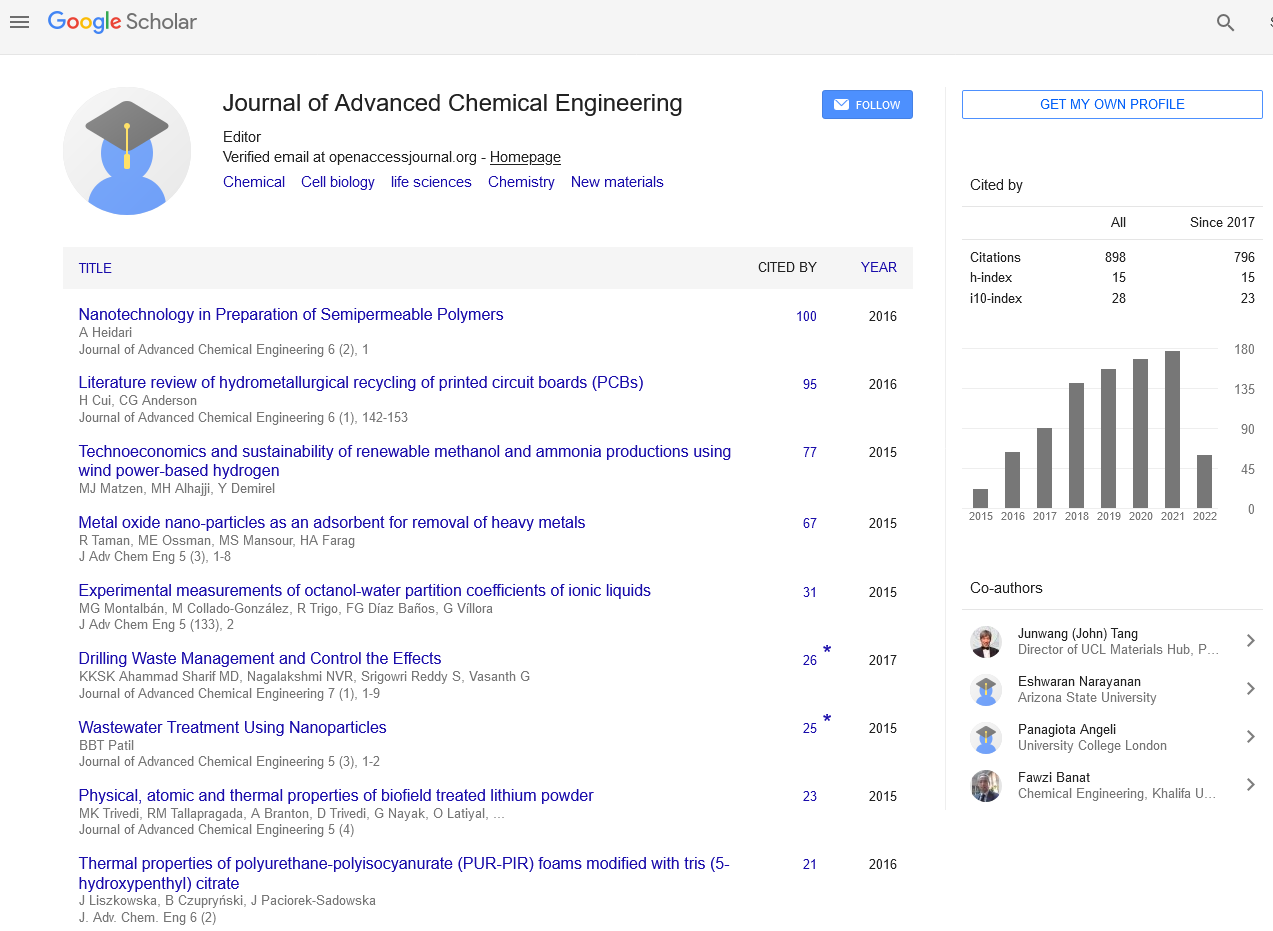Indexed In
- Open J Gate
- Genamics JournalSeek
- Smithers Rapra
- RefSeek
- Directory of Research Journal Indexing (DRJI)
- Hamdard University
- EBSCO A-Z
- OCLC- WorldCat
- Scholarsteer
- Publons
- Geneva Foundation for Medical Education and Research
- Google Scholar
Useful Links
Share This Page
Journal Flyer

Open Access Journals
- Agri and Aquaculture
- Biochemistry
- Bioinformatics & Systems Biology
- Business & Management
- Chemistry
- Clinical Sciences
- Engineering
- Food & Nutrition
- General Science
- Genetics & Molecular Biology
- Immunology & Microbiology
- Medical Sciences
- Neuroscience & Psychology
- Nursing & Health Care
- Pharmaceutical Sciences
Abstract
Evaluation of Design and Operational Parameters of Pilot Single Stage Stabilization Pond for Treatment of Brewery Waste Water Effluent
Okonkwo PC and Umar Musa
The suitability of waste stabilization pond (WSP) as a cheaper alternative in the treatment of brewery wastewater effluent was investigated. A pilot WSP was designed and constructed and test run for the treatment brewery wastewater effluent. Wastewater effluents were collected from an operating brewing industry in Kudenda light industrial layout, Kaduna. The influent pond flow rate of 0.2 m3/day was chosen for the design of the pilot pond. Kinetic model design procedure of a facultative pond was used to design a rectangular shaped pond to reduce the BOD loading by 90%. The pond capacity was 4.7 m3 (4700 litres) with a retention time of 25 days. The parameters that were analyzed for the raw and treated wastewater include: Biological Oxygen Demand (BOD5), Chemical Oxygen Demand (COD), Total suspended solids (TSS), Turbidity and Electrical conductivity (EC). It was observed that aerobic degradation occurred at the upper layer of the pond favoring the activities of aerobic bacteria. At the middle layer however favored the activities of the facultative bacteria, while at the lower level where there is virtually little or no presence of dissolved oxygen, anaerobic decomposition of the wastewater predominate. These combined mechanisms yielded the total the total decomposition of the wastewater by the pond. The BOD removal rate constant was 0.088 per day and the BOD-COD correlation was BOD=0.531COD-1.960. The BOD removal regression model was: BOD=0.0001t5-0.0034t4-0.1419t3+6.6096t2-102.09t+1114.5 and the pond performance efficiencies for the reduction/removal of the tested parameters 69% 68.9%, 81%, 67.2% and 71.6% respectively. The pond performance was found to be satisfactory and the kinetic parameter obtained can be utilized in the scale up design for industrial scale WSP.


